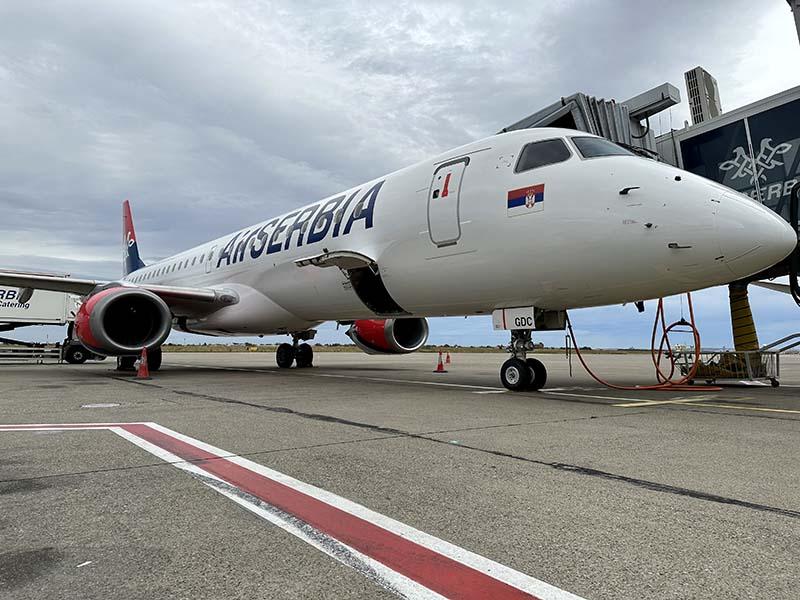
At present, Serbia’s flag-carrier operates a fleet of seven ATR 72-600 turboprops for regional and short-haul international services, 10 Airbus A319s and three A320s for most of its European services, plus two A330-200s for long-haul work (to the U.S. and China).
In summer 2023, however, the airline introduced its first Embraer E195. It now has two, plus a single E190 and a single E175. The last of these is a temporary addition until a third E195 arrives later this month. A fourth E195 is anticipated next January.
To avoid the complexity of introducing a fourth type into a relatively small fleet, Air Serbia is wet-leasing the aircraft from Greek carrier Marathon Airlines, which will handle maintenance.
“It’s not a typical wet-lease, it’s a growing partnership towards a capacity purchase agreement (CPA),” Air Serbia CEO, Jiři Marek said. “At the moment, we’re targeting five to six units for next summer. That depends very much on how Marathon will be able to source aircraft.”
Air Serbia has been looking at the crossover jet segment for some time and experimented with a CRJ from Estonia’s Nordica before Covid.
The aim is to replace the 144-seat A319s, which will be phased out. That will leave a gap between the 72-seat ATR 72-600s and the 180-seat A320s. The new E195s seat 118 passengers.
Athens-based ACMI specialist Marathon was recommended by Embraer. “Marathon is looking for aggressive growth, and so are we,” Marek said. “We’re 45% above 2019 figures in terms of passenger numbers. We will carry 4 million passengers this year, compared to 2.8 million in 2019.”
Air Serbia has opted for the E1 versions of the Brazil-built jets to take advantage of the aircraft’s maturity, especially in engines.
The Embraers are being used in several roles, Marek said: “We would like to grow frequencies on some of the routes on which we’re using A319s. It’s much better, as a hub-and-spoke airline, to have high frequency rather than more capacity.
“We’re also using them on some ATR routes that need an upgrade, but which are not mature enough for an A319, such as Prague, and regional routes where we have high demand, such as Montenegro, Romania and Italy. We also use them to Germany, where we have thin routes on which we want more frequency.”
Passenger reaction to the Embraers has been “very positive.” Compared to the A319s, the 2+2 seating is more popular than the Airbus’s 3+3, while they are quieter and faster than the ATRs, said the CEO.
